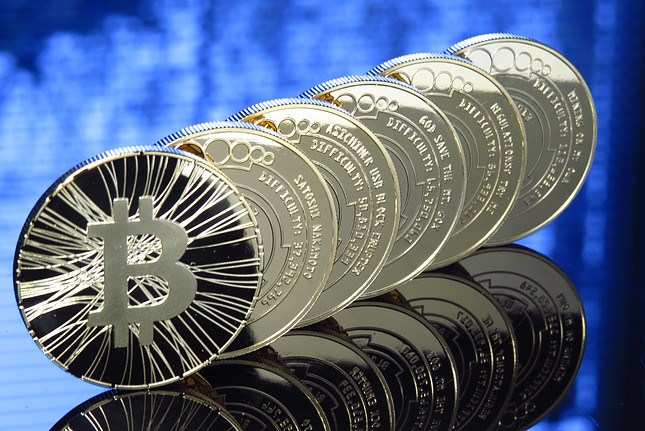- Japan moves away from developing its own digital currency while the rest of the world moves forward
- Other global central banks move in the opposite direction
The Japanese regulator explained that it had no plans to launch its own digital currency (CBDC) at this stage from considerations of ensuring the stability and efficiency of the payment and settlement systems.
The Bank explained its approach to "general purpose" CBDC in a document titled "The Bank of Japan's Approach to Central Bank Digital Currency."
The Bank of Japan believes that it is unlikely that the cash in circulation would drop significantly, meaning that there is no need to speed up the launch of a new type of money.
If private digital money will not substitute for the functions of cash sufficiently, the Bank might provide general-purpose CBDC as a payment instrument alongside cash. As long as there is public demand for cash, the Bank will stay committed to supplying it, the regulator explained.
Notably, BOJ admits that the rapid development of information communication technology may lead to a surge in public demand for central bank digital currency (CBDC). However, the regulator does not see it as a pressing issue and finds it imperative to prepare thoroughly for the changes in circumstances.
China thinks differently
Meanwhile, its Asian neighbor is ready to literally drop its digital yuan on the citizens. The local media outlet reports that the Shenzhen government, together with the Central Bank, will distribute 10 million yuan of DECP to 50,000 residents, 3389 merchants in Luohu District. The citizens should install one of four DCEP wallets developed by the major four commercial banks to participate in the airdrop.
Shenzhen gov started a DCEP Airdrop to anyone who’s in Shenzhen.. just need download a DCEP wallet , there are four wallets developed by the major 4 commercial banks pic.twitter.com/Zax4mq3ree
— Molly (@bigmagicdao) October 9, 2020
All the participants shall provide their details, including the ID and mobile phone number. The registration for the airdrop is open from October 9 to October 11.
Europe stands ready
Europe also seems to be moving towards launching the digital euro. As the FXStreet recently reported, the European Central Bank considers developing the digital version of the single currency to make payments and money transfers more efficient.
Notably, the ECB emphasized that the digital euro will be fully backed and controlled by the regulator.
Canada, Brazil, Estonia are all in the CBDC boat
Other regulators are cautiously optimistic about launching their versions of digital currencies. As the FXStreet previously reported, Brazil plans to launch its coin in 2021.
Canada recently published a report devoted to CBDC risks; however, the Central Bank is working on its own coin since February.
Note: All information on this page is subject to change. The use of this website constitutes acceptance of our user agreement. Please read our privacy policy and legal disclaimer. Opinions expressed at FXstreet.com are those of the individual authors and do not necessarily represent the opinion of FXstreet.com or its management. Risk Disclosure: Trading foreign exchange on margin carries a high level of risk, and may not be suitable for all investors. The high degree of leverage can work against you as well as for you. Before deciding to invest in foreign exchange you should carefully consider your investment objectives, level of experience, and risk appetite. The possibility exists that you could sustain a loss of some or all of your initial investment and therefore you should not invest money that you cannot afford to lose. You should be aware of all the risks associated with foreign exchange trading, and seek advice from an independent financial advisor if you have any doubts.
Recommended Content
Editors’ Picks

Litecoin Price Prediction: LTC tries to retake $100 resistance as miners halt sell-off
Litecoin price grazed 105 mark on Monday, rebounding 22% from the one-month low of $87 recorded during last week’s market crash. On-chain data shows sell pressure among LTC miners has subsided. Is the bottom in?

Bitcoin fails to recover as Metaplanet buys the dip
Bitcoin price struggles around $95,000 after erasing gains from Friday’s relief rally over the weekend. Bitcoin’s weekly price chart posts the first major decline since President-elect Donald Trump’s win in November.

SEC Commissioner Hester Pierce sheds light on Ethereum ETF staking under new administration
In a Friday interview with Coinage, SEC Commissioner Hester Peirce discussed her optimism about upcoming regulatory changes as the agency transitions to new leadership under President Trump’s pick for new Chair, Paul Atkins.

Bitcoin dives 3% from its recent all-time high, is this the cycle top?
Bitcoin investors panicked after the Fed's hawkish rate cut decision, hitting the market with high selling pressure. Bitcoin's four-year market cycle pattern indicates that the recent correction could be temporary.

Bitcoin: 2025 outlook brightens on expectations of US pro-crypto policy
Bitcoin price has surged more than 140% in 2024, reaching the $100K milestone in early December. The rally was driven by the launch of Bitcoin Spot ETFs in January and the reduced supply following the fourth halving event in April.

Best Forex Brokers with Low Spreads
VERIFIED Low spreads are crucial for reducing trading costs. Explore top Forex brokers offering competitive spreads and high leverage. Compare options for EUR/USD, GBP/USD, USD/JPY, and Gold.